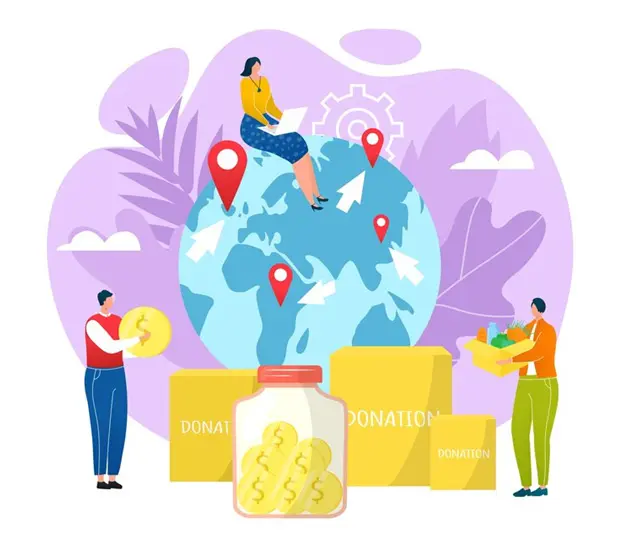Non-profit organizations exist to serve a specific purpose, and while they don’t specifically exist to make a profit, transparency is still just as critical for these organizations as it is for for-profit companies. Donors are the lifeblood of non-profits, and transparency is often the make or break point when it comes to securing financial support. Moreover, with the level of government scrutiny in the recent past NGOs don’t have any option but to be fully accountable and transparent.
In this blog post, we’ll discuss why non-profit transparency is so important, ways in which non-profits can be transparent, and why the benefits of transparency go beyond just financial support.

Why Transparency Matters
Non-profit organizations rely on the support and trust of their donors. Donors want to know that their contributions are going to a good cause and that their money is being used to achieve the pre-specified goals. Transparency is critical for establishing confidence between a non-profit and its donors. According to surveys conducted by Fidelity Charitable, Give.org, and the Johnson Centre polls, roughly 65% of respondents reported an unwillingness to donate to non-profit organizations that they considered were not transparent enough. Furthermore, only 35% of respondents thought non-profits did a good job of being clear about their finances.
Transparency is also important for a non-profit’s reputation. As news surrounding fraudulent or scandalous non-profits can easily become viral and be reported, a lack of transparency could lead to potential donors becoming skeptical of the organization from a simple Google search. Being open and honest about day-to-day operations, finances, and objectives will help to maintain trust between the non-profit organization and its supporters.
Benefits of Transparency
While transparency is essential for obtaining financial aid, the benefits of transparency extend far beyond monetary assistance. Transparency can lead to increased engagement from donors, volunteers, the government and other supporters, besides productive collaborations. Educating supporters on the impact of the non-profit’s work and the organization’s financial viability can help to strengthen the non-profit’s relationship with its community. As a result, there may be a more passionate support base and a more engaged community.
Ways in Which Non-Profits Can Be Transparent
Being transparent is a continuous process, but there are specific ways in which non-profits can demonstrate transparency. Below, we’ll talk about a few of the most important methods of transparency.
1. Financial Transparency
Non-profits should be transparent with how they allocate and use funds. Publishing financial reports, with a costs and expenses breakdown, can also give supporters and potential donors an understanding of the organization’s financial standing and operating efficiently.
Sarthak Foundation, an organization that provides educational support to underprivileged children in India, is an excellent example of a non-profit that values financial transparency. They provide annual reports and impact reports on their website, which demonstrates their commitment to being transparent, helping build trust and clarity.
2. Mission Transparency
3. Operational Transparency
Non-profits should also be transparent about current programs, its operations and the impact each program is creating. This transparency assures donors exactly how their contributions are supporting the organization’s efforts. Keeping supporters informed about day-to-day operations and specific programs can also make the non-profit feel like more of a community.
4. Communication Methods
A non-profit should communicate with supporters, beneficieries and donors through newsletters, social media, email updates, etc.. Such communications provide valuable insights into what programs the non-profit is currently working on, the organization’s progression, financial reports and way forward. This frequent and clear update is an important aspect of maintaining trust between the non-profit and its supporters.
Conclusion
Transparency is vital for the success of a non-profit. It builds donor trust, preserves reputation, improves internal and external relationships & controls, and leads to a more engaged support base, besides adhering to government requisites. Platforms such as Let It Count ensure this transparency by performing an intense due diligence on identified social cause projects, making it easier for deserving beneficiaries to gather funds while giving the transparency and trust that contributors demand.
Donors who choose to donate through Let It Count can see the impact of their contributions as well as how their money is being used. The organization’s transparency in its goals, operations, and allocation methods makes it a dependable option for donors willing to make an impact in society.
When a non-profit is transparent with its stakeholders, it shows that its contributions are valued and put towards sound efforts, besides re-emphasising conviction in its goals.
FAQ’s
Transparency is important for non-profit organizations because it builds trust between the organization and its donors. Donors want to know that their contributions are going towards the stated goals of the non-profit and that their money is being used in an efficient and ethical manner.

